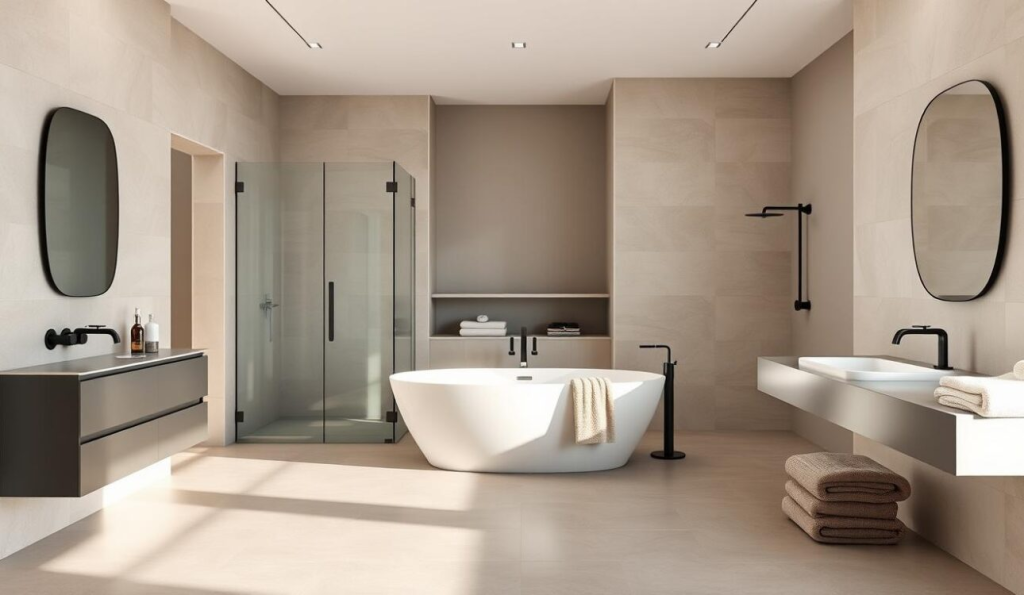
Introduction
In the realm of interior design, the worktop is more than just a functional surface; it is the canvas upon which a room’s entire aesthetic is built. For decades, designers were limited to the unpredictable veining of marble or the speckled patterns of granite. Then came quartz, an engineered stone that has fundamentally reshaped the creative landscape. No longer bound by the whims of nature, quartz offers an unprecedented level of control, consistency, and creative possibility. It has become the ultimate tool for realising a specific design vision, from minimalist sanctuaries to bold, dramatic statements. This article explores the aesthetic revolution powered by quartz, guiding you through the vast array of styles, finishes, and design applications that make it the preferred choice for designers seeking to marry beauty with unparalleled performance.
The Pantheon of Patterns: Mimicking Nature and Pioneering New Trends
The aesthetic versatility of Quartz worktops is its most powerful asset. Through advanced manufacturing techniques, producers can create visuals that were once impossible. The most sought-after category remains the marble-look quartz. These slabs capture the elegant, sweeping veins of Carrara, Calacatta, and Statuario marble but without the porosity, staining, and etching anxieties associated with the real thing. This allows homeowners to achieve a classic, luxurious look in high-traffic kitchens and wet bathrooms where real marble would be impractical. Beyond marble, quartz excels at replicating the dense, granular look of granite and the soft, earthy tones of limestone and travertine, offering a more consistent and durable alternative. However, quartz’s true innovation lies in its ability to break free from mimicry altogether. Designers can now choose from a stunning array of solid colours from deep, moody charcoals and navies to bright, pure whites and pastels that are simply not available in natural stone. For those seeking a truly unique statement, there are quartz slabs embedded with large, reflective glass fragments, subtle metallic flecks, or bold, artistic veining in colours like rust, navy, or emerald green, turning the worktop into a definitive piece of art.
The Impact of Finish: From High-Gloss to Textured Matte
The colour and pattern of a quartz slab are only part of the story; the finish determines its final character and how it interacts with light. The classic polished finish creates a high-gloss, reflective surface that amplifies light, makes spaces feel larger, and adds a touch of formal, contemporary glamour. It highlights the depth and clarity of the quartz’s pattern, making colours appear more vibrant. For a more understated and modern aesthetic, the suede or honed finish is becoming increasingly popular. This velvety, matte surface diffuses light, creating a soft, tactile feel that is forgiving of fingerprints and water spots, making it ideal for busy family kitchens. The most recent innovation in quartz finishes is the textured or leathered finish. This process creates a subtle, three-dimensional texture on the surface, which not only provides incredible visual interest and a rustic, organic feel but also offers enhanced grip, a practical consideration for kitchen islands. The choice of finish allows designers to fine-tune the mood of a space, using the same slab in a different finish to achieve a completely different effect.
Design Applications Beyond the Kitchen Counter
While the kitchen countertop is the most common application, the versatility of quartz invites creativity throughout the home. In the bathroom, it creates sleek, seamless vanities and shower surrounds that are both hygienic and stunning. Its non-porous nature makes it impervious to moisture, soap, and cosmetics, ensuring a lasting beauty. Designers are also using quartz to craft distinctive backsplashes, often book-matching slabs to create a symmetrical, mirror-image waterfall of pattern that becomes a breathtaking focal point. The material’s strength allows for dramatic overhangs on kitchen islands without the need for additional supports, creating a clean, floating effect. More adventurous applications include using quartz for fireplace surrounds, custom-built furniture like desks and console tables, and even as a luxurious, durable flooring material. This ability to create a cohesive design language across multiple surfaces from the kitchen island to the bathroom vanity to the living room hearth solidifies quartz’s status as a truly holistic design material, offering a unified and sophisticated aesthetic that is as durable as it is beautiful.
